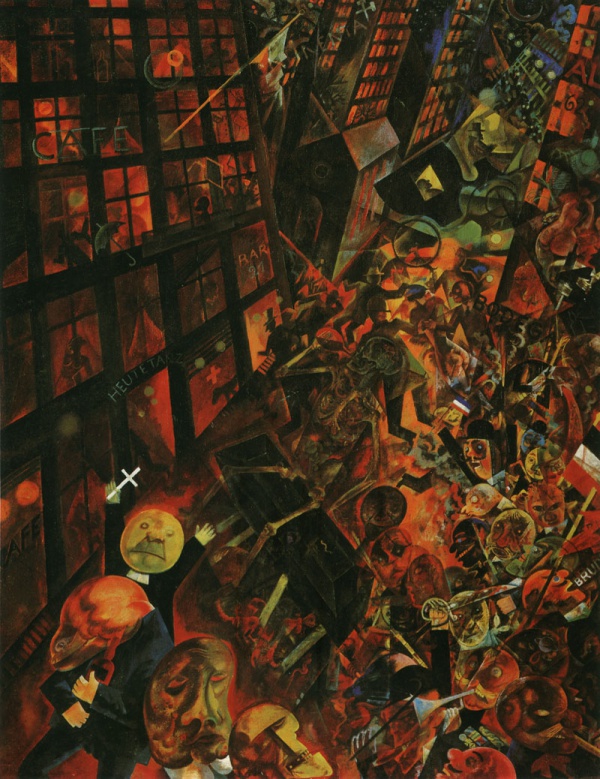Facts About The Funeral (Grosz)
"The Funeral" is a striking painting by George Grosz, a renowned German Expressionist artist, created between 1917 and 1918. This piece masterfully blends elements of Futurism and Cubism to depict a funeral procession set against the backdrop of a bustling modern city. The scene is a chaotic maelstrom filled with grotesque and twisted figures.
Grosz dedicated this painting to Oskar Panizza, a German psychiatrist and avant-garde writer known for his vehement criticism of militarism and religious authority. The artwork channels the dark, dramatic essence of medieval hellscapes, employing intense red tones and distorted human forms to craft a haunting atmosphere. At the center of the composition, a skeleton symbolizing the Grim Reaper sits atop a coffin, surrounded by mourners who are portrayed as hideous, frenzied, and plagued by alcoholism and syphilis. Towering above the procession, the buildings appear claustrophobic and unstable, as if teetering on the brink of collapse onto the chaotic scene below.
With "The Funeral" Grosz aimed to protest what he perceived as a mad humanity, depicting dehumanized figures in a nightmarish urban landscape. The painting's theme of societal decay and moral corruption is vividly conveyed through the disturbing portrayal of the mourners and the oppressive cityscape. The dark and provocative imagery echoes the "Dance of Death" motif, underscoring the transient nature of life and the inevitability of death.
Interestingly, "The Funeral" was chosen as the cover artwork for the 1987 album "I Am a Wallet" by the British rock band McCarthy. Grosz's work remains acclaimed for its bold critique of society and its unique amalgamation of artistic styles, making it a powerful statement on the human condition.

 Czech Republic
Czech Republic